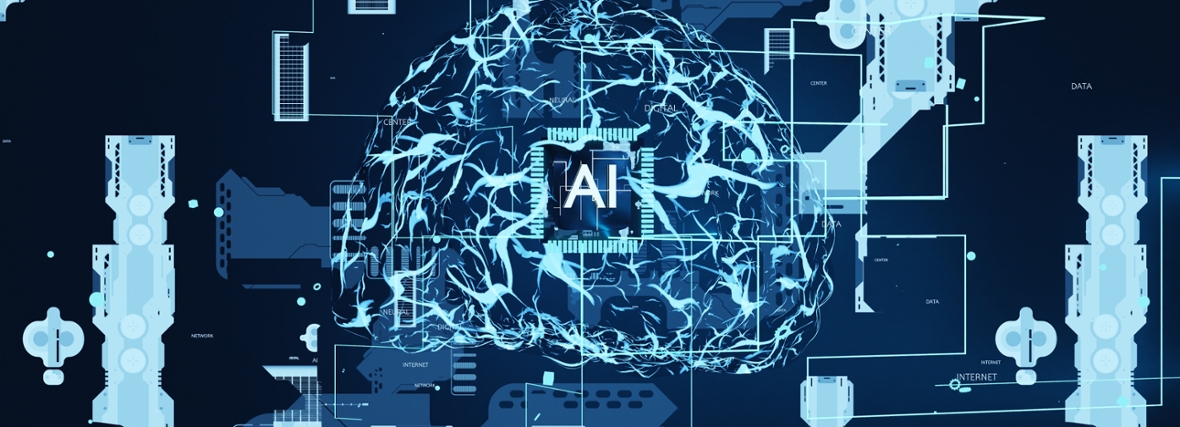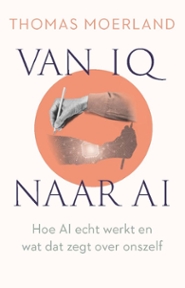
‘If you understand the risks, AI is an incredible tool’
Artificial intelligence
Thomas Moerland studied medicine and mathematics in Leiden and has a lifelong fascination with the origins and workings of intelligence. He brought all that together in his popular science book Van IQ naar AI (From IQ to AI).
Anyone who sits down with mathematician Thomas Moerland immediately finds themselves in the middle of his book. Because how does such a simple thing as a conversation actually work in your brain? How do you say what you mean, pick up your coffee without spilling it, and at the same time process what the other person is saying?
‘I’ve always been deeply fascinated by intelligence,’ Moerland says, without spilling his coffee. ‘When I studied medicine, I hoped to figure out how intelligence works. But it turned out that mathematics, and later AI research, was a better way to get there. In this field, we have to think of intelligence as a mechanism.’

The human brain still has a huge head start
Moerland approaches intelligence from two sides: the human brain and its artificial counterpart. He takes the reader on a journey through the past and present of AI research and looks ahead to what’s next. For a long time, the astonishing speed and computational power of our brains inspired the development of artificial intelligence. But when scientists tried to replicate that, they quickly realised that the human brain was far ahead. The processing power and the sheer volume of data involved were simply too much to handle.
That’s why researchers no longer try to copy the brain directly. Instead, they use the mathematical processes that also occur in our brains as a starting point. This approach has led to the creation of immense, layered networks and, for the first time in history, large-scale applications of artificial intelligence. ‘This approach works,’ Moerland says. ‘But it has also pushed the two paths—the human brain and mathematics—further apart. I think we underestimate how deeply connected they actually are.’
‘AI can teach us something about our own brains’
‘By treating human intelligence as something psychological and artificial intelligence as purely mathematical, we reinforce a gut feeling in society: this is a computer, so it isn’t real. But we need both sides to work together. That combination can actually teach us something about our own brains. We’ve learned a lot about how our brains work, but much remains unclear. How exactly does our brain adapt?'
‘Intelligence is one of the most fundamental aspects of who we are. We should want to understand it.’
That’s hard to study in such a complex system, according to Moerland. 'In AI systems we can’t interpret all those billions of numbers, but we do understand the mechanisms that make learning possible.’
AI and the human brain need each other
AI can show us where to look if we want to understand the brain better. But the reverse is also true: artificial intelligence needs the human brain in order to progress. ‘People who say AI is developing too slowly or that machines will never match human intelligence, forget how much of a head start our brains have,’ Moerland says. ‘Millions of years of evolution. That might be the biggest difference, because computers can calculate faster and process far more data than we can.’
Mathematics and the human touch
To prevent artificial intelligence from taking millions of years to evolve as well, Moerland believes human guidance is essential.
His book is therefore a plea for both mathematics and the human touch. That’s also one of the reasons he chose a popular science approach. ‘I think it’s important that the general public understands what this technology really is and where it comes from. If you understand that—and the risks—AI is an incredible tool. ‘Intelligence is one of the most fundamental aspects of who we are. We should want to understand it.’
Research in Leiden
Thomas Moerland obtained his PhD in computer science and is now based at the Leiden Institute of Advanced Computer Science (LIACS), where he specialises in reinforcement learning—simply put, learning through reward and punishment.
At Leiden, research mainly focuses on fundamental AI questions, such as developing new algorithms. Other aspects that drive AI forward, like massive data centres and extreme computing power, are more the domain of commercial companies. ‘Universities simply can’t compete financially with that,’ Moerland says.
‘And that’s fine. As a knowledge institution, we’re much better placed to ask the bigger and broader questions, even if they don’t have immediate economic value. LIACS and Leiden University give us that freedom.’
